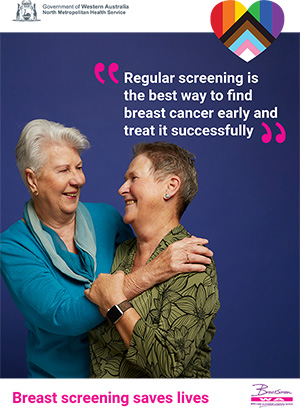The latest data on the level of suicide in Australia has triggered more action from government, workplaces and the wider community.
This article contains discussions about suicide. Support information can be found at the base of the article.
This week the Australian Bureau of Statistics released the latest Causes of Death data showing 3,307 Australians died by suicide in 2024 — 2,529 of these were men.
Suicide Prevention Australia has highlighted that corresponds to seven men every day who die by suicide; enough men to field more than a hundred AFL teams, over 100 classrooms, 12+ full passenger planes, and 2,529 empty seats around dinner tables every night.

Overall men account for 75% of all suicides in Australia, and it is clear that particular cohorts are most at risk, and unique responses are needed for each of their groups. While all men are at heightened risk, particular groups — like trades and technician workers, those aged 40-44, Aboriginal and Torres Strait Islander, remote and very remote residents — are more vulnerable than most.
While males continue to account for just over three quarters of suicide deaths, concerningly the data also revealed females aged between 25-29 years had the highest age-specific suicide rate and the largest increase in their age-specific suicide rate from 2023 among females. Suicide deaths among Aboriginal and Torres Strait Islander people also increased by 8.1% in 2024 compared to the previous year.
CEO of Suicide Prevention Australia, Nieves Murray said these figures are devastating and stubbornly high.
“We must do more, and suicide prevention must be made a whole-of-government and whole-of-community priority.
“In addition to the lives lost, over 55,000 people attempt suicide every year. That’s 150 people every day, one person every 10 minutes. This cannot be ignored. We need more action now.
“We all have a role to play in preventing suicide. Governments can lead by embedding prevention across all areas of decision making; employers can prioritise mentally healthy workplaces and train frontline managers; as individuals we can get educated about suicide prevention and support one another.
“The Federal Government released Australia’s first National Suicide Prevention Strategy nine months ago. However, there has so far been no additional funding to support its implementation.
“All the pieces are in place for government to act. Suicide rates are not easing. Investing in and implementing this Strategy must be treated as a national priority,” Murray said.
Suicide continues to impact men disproportionately. Men aged 45-49 accounted for 10.5% of all male suicides, the highest proportion among men, while those living in remote and very remote areas had suicide rates more than double those in major cities — the highest recorded in the past five years.
For Aboriginal and Torres Strait Islander men, suicide remains the second leading cause of death. In 2023-2024, technicians and trades workers were the most common occupation group among males who died by suicide, representing 27.6% of male suicides.
“Men, particularly those in regional areas and high-risk occupations, continue to be disproportionately impacted by suicide. It’s encouraging to see the government recognise this through the Special Envoy for Men’s Health. Now we have a real opportunity to build on that commitment with targeted, coordinated action,” Nieves Murray said.
For the first time, the ABS Causes of Death data identified occupations most at risk of suicide. People working in trades and technical roles face high number of suicides, reinforcing the importance of industry-based prevention models like those developed in the mining and construction sectors.
Alarmingly, 164 female health professionals died by suicide across 2023-2024, highlighting the pressures facing the health workforce and the need to extend tailored workplace-based support to other sectors.

More funding needed for support services as demand grows
Research has also shown that more Australians are accessing suicide prevention services, but more support is needed for these vital interventions.
“Demand for suicide prevention services is rising, yet many are already stretched to breaking point. The government must respond proportionately to this increase in need,” Murray said.
“The people working to prevent suicide are saving lives every day — but this workforce is under enormous strain due to short-term funding and a lack of stability. The National Suicide Prevention Strategy is designed to fix this by building a sustainable, coordinated system so Australians can get help when and where they need it.
“The Strategy includes practical, immediate actions the government can take — requiring leadership rather than large budgets. Things like supporting families and carers to recognise suicidal distress, making support more available and affordable for people with chronic suicidal thoughts, and ensuring people in crisis are getting timely help from community and hospital services.
“Suicide is not just a health or mental health issue — it is a social and economic issue. The top risk factors in suicide deaths included not just mood and anxiety disorders, but also relationship problems, drug and alcohol use, and legal difficulties.
“To reduce suicide rates, Australia needs a whole-of-government response involving health, housing, education, justice, employment and more. The National Strategy outlines targeted, evidence-based actions to address the social and economic determinants of suicide. Now we need to see leadership and investment to make it real.
“It’s encouraging to see more comprehensive data now available on suicide. This additional clarity provides a stronger foundation for understanding the factors that contribute to suicide and for shaping future prevention efforts. We’ve long advocated for more regular and detailed reporting, so this is an important step forward — particularly the inclusion of occupation data, which will help guide targeted strategies and interventions.
“Australians need support that meets them where they are — but most of all, they need action. The government has put pen to paper. Now it’s time to act,” Murray said.
Suicide Prevention Australia said they remain committed to advocating for lifesaving changes and will continue to work with its member organisations to reduce suicide rates in Australia.
“It’s important to remember that there is hope, and there is help available. Check in on those around you and if you’re experiencing distress, please reach out for support,” Murray noted.
Do you need some support?
If you are struggling with anxiety or depression, support and counselling are available from:
QLife: 1800 184 527 / qlife.org.au (Webchat 3pm – midnight)
QLife are a counselling and referral service for LGBTQIA+ people.
DISCHARGED: info@discharged.asn.au / discharged.asn.au
Discharged is a trans-led support service with peer support groups for trans and gender diverse folks.
Lifeline: 13 11 14 / lifeline.org.au
Beyondblue: 1300 22 4636 / www.beyondblue.org.au
Correction: An earlier version of this report included a quote from CEO of Suicide Prevention Australia, Nieves Murray that contained inaccurate information. This has been removed.





